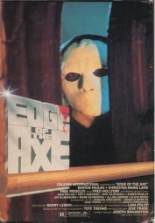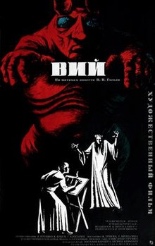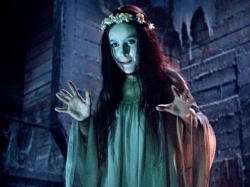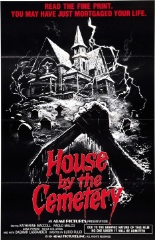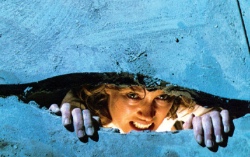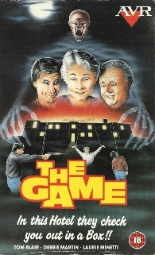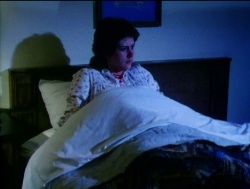
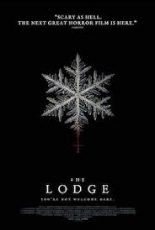 One otherwise sunny afternoon, Richard (Ocean’s Eight’s Richard Armitage) deserves a World’s Worst Estranged Husband award for telling his wife he wants to finalize their divorce and marry his new girlfriend — a one-two punch of info that drives the spouse to suicide. Six months later, over Christmas vacation, he earns a World’s Worst Dad trophy to add to that hypothetical mantle by forcing his two kids to spend time in their snow-covered mountain cabin with said girlfriend, Grace (Riley Keough, Logan Lucky), and then leaving them with her for a few days.
One otherwise sunny afternoon, Richard (Ocean’s Eight’s Richard Armitage) deserves a World’s Worst Estranged Husband award for telling his wife he wants to finalize their divorce and marry his new girlfriend — a one-two punch of info that drives the spouse to suicide. Six months later, over Christmas vacation, he earns a World’s Worst Dad trophy to add to that hypothetical mantle by forcing his two kids to spend time in their snow-covered mountain cabin with said girlfriend, Grace (Riley Keough, Logan Lucky), and then leaving them with her for a few days.
Not only is Grace a stranger, but they blame her for their mom’s death. Furthermore, they know she’s literally a psychopath, being the daughter of a Christian cult leader (played by her real-life dad, Danny) whose members killed themselves in a mass suicide à la Heaven’s Gate. Only Grace, befitting of her name, survived, yet bears heavy emotional scars, all of which Keough rightly and consistently plays in the key of dour.
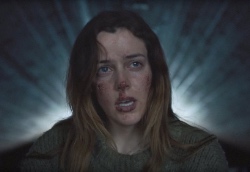 What begins to happen in The Lodge once Richard temporarily vacates is best left to audiences to discover on their own. More eerie than scary, the picture marks just the second narrative feature for the Austrian duo of Veronika Franz and Severin Fiala, following up the acclaimed twin terrors of Goodnight Mommy. This one is even better; call it Goodnight Stepmommy-to-Be. Just when you think Franz and Fiala are pulling pages from their 2014 film for recycling, the course of events changes wildly, and viewers might not be willing to follow if the actors weren’t so good.
What begins to happen in The Lodge once Richard temporarily vacates is best left to audiences to discover on their own. More eerie than scary, the picture marks just the second narrative feature for the Austrian duo of Veronika Franz and Severin Fiala, following up the acclaimed twin terrors of Goodnight Mommy. This one is even better; call it Goodnight Stepmommy-to-Be. Just when you think Franz and Fiala are pulling pages from their 2014 film for recycling, the course of events changes wildly, and viewers might not be willing to follow if the actors weren’t so good.
Keough is, in particular, excellent, but let’s not diminish the two other equally tricky roles of Richard’s children, played by Jaeden Martell (Knives Out) and Lia McHugh (Along Came the Devil). They interact like real siblings, with McHugh believably conveying grief for which Martell, in turn, provides the big-brother support she needs. And far from Clueless, Alicia Silverstone is terrific in a brief appearance that neither requires nor allows her to lean on her trademark charm.
As was the case with Goodnight Mommy, one important character goes unbilled: architecture. Franz and Fiala build so many shots starting from that foundation, giving The Lodge a touch of delicate elegance even in its darkest corners. Their compositions are crisp and symmetrical, much like the microscopic snowflake of this arthouse horror’s poster. —Rod Lott

